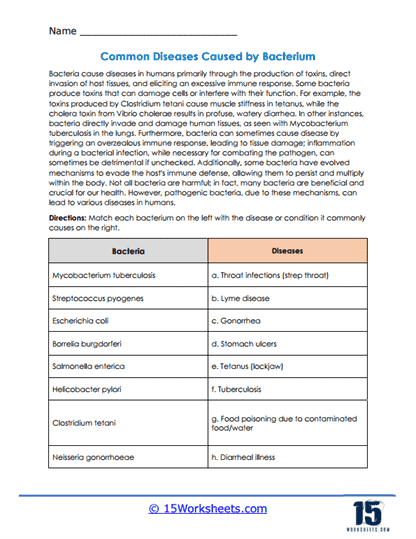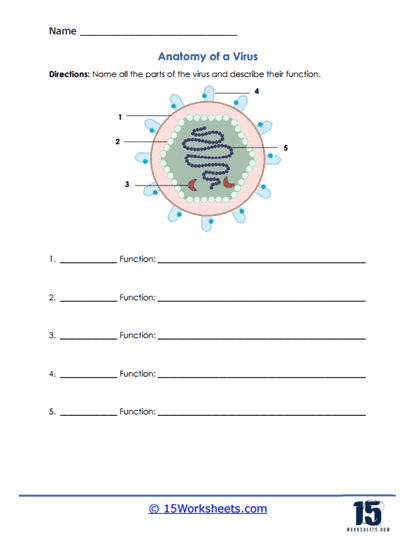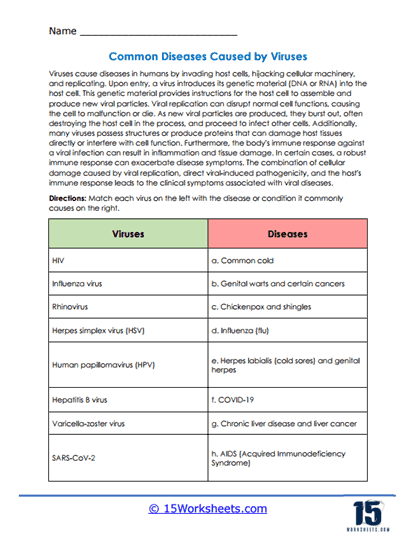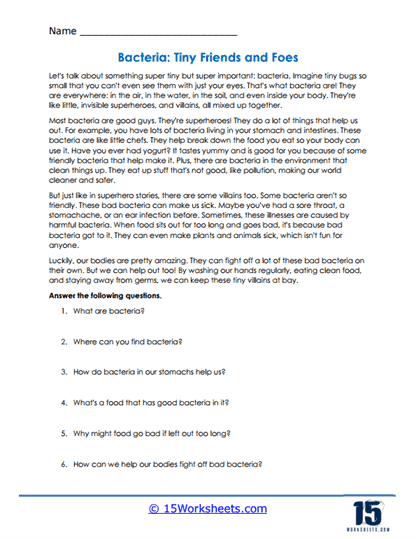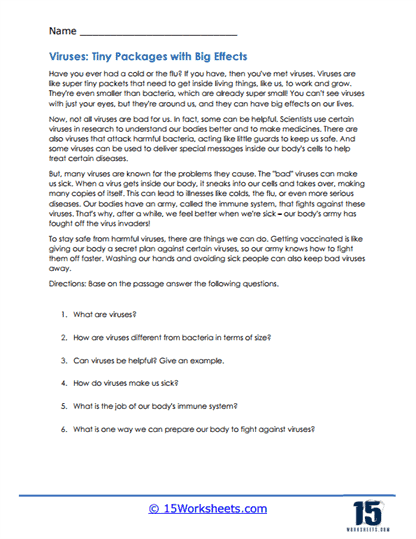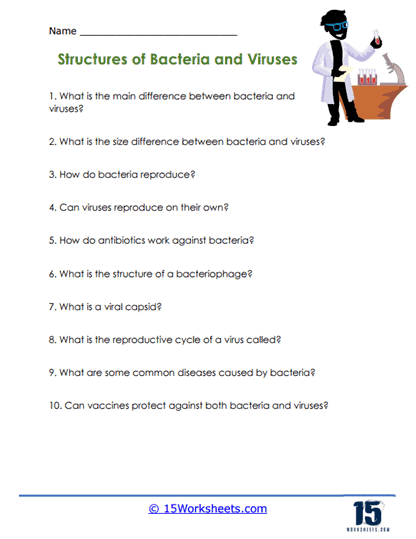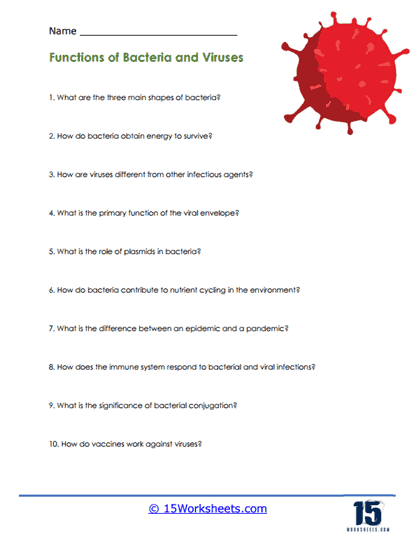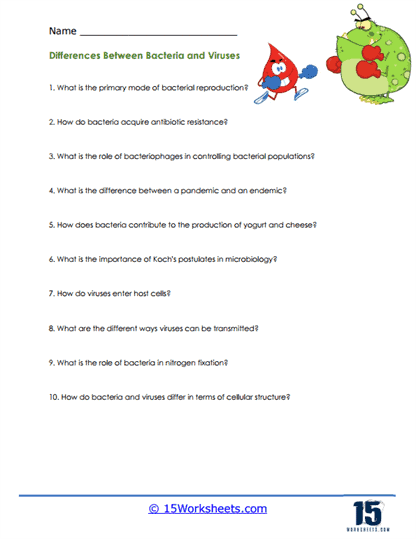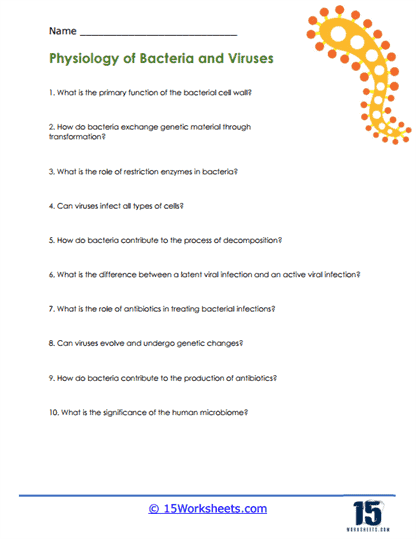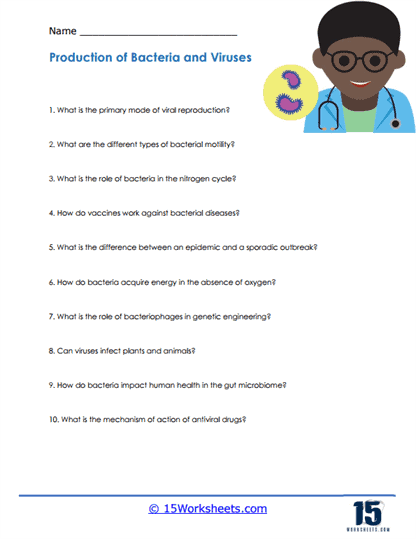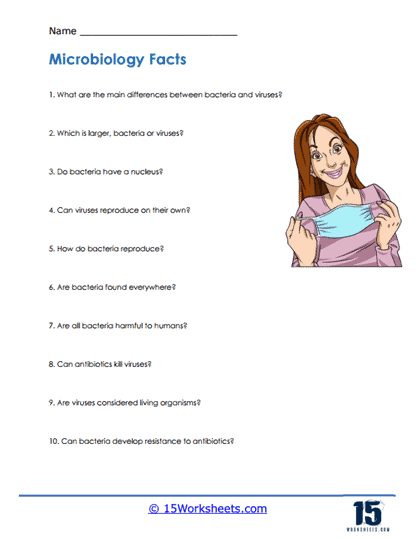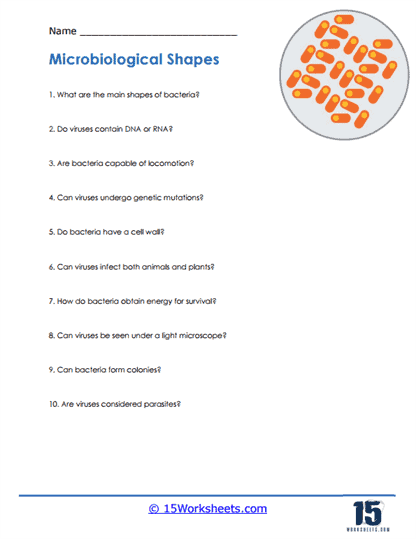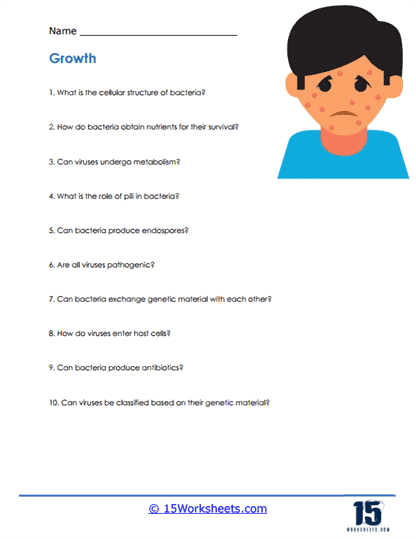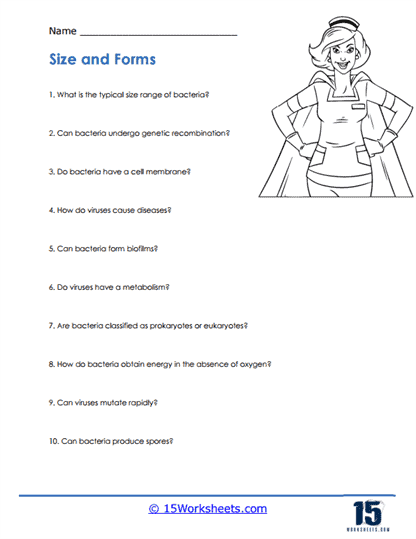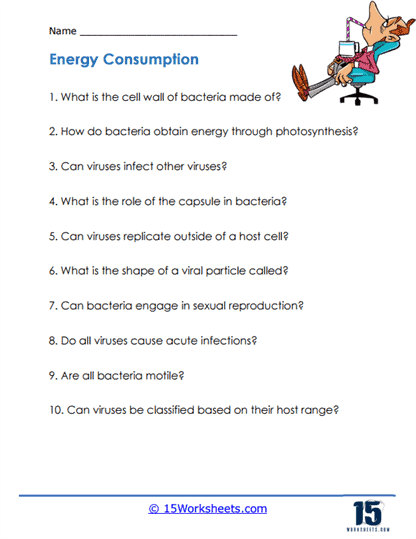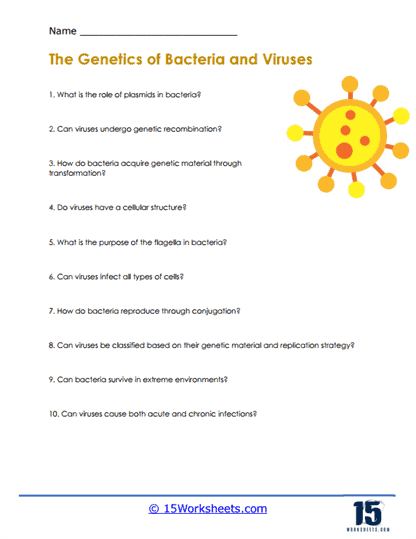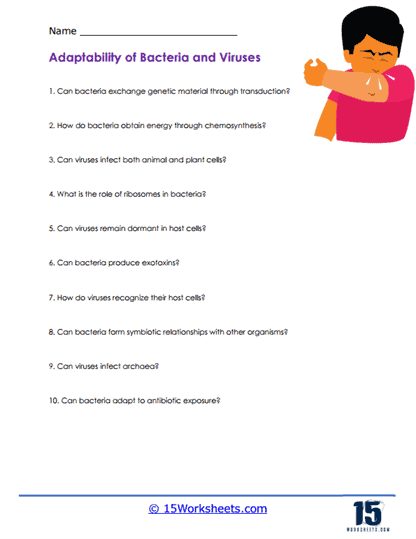Bacteria and Viruses Worksheets
About These 15 Worksheets
Bacteria and viruses are microscopic organisms, invisible to the naked eye, yet their influence on our world is nothing short of monumental. These tiny beings hold the power to affect every aspect of life, from our health to the food we eat, and even the environment we live in. While we might not always be aware of their presence, we certainly experience their effects-both good and bad. From the sniffles of the common cold to the delicious tang of yogurt, bacteria and viruses are constantly at work behind the scenes. The more we understand these microscopic powerhouses, the better we can appreciate their complexity and the roles they play in shaping our daily lives.
This brings us to the importance of learning about bacteria and viruses in a way that’s both engaging and thought-provoking. Many educational materials on these topics can be dry or overly complex, which can turn students away from such fascinating subjects. However, our series of 15 carefully crafted worksheets on Bacteria and Viruses is designed to change that. These worksheets are not your typical run-of-the-mill educational resources. They’re packed with fun activities, hands-on experiments, and challenging questions that encourage curiosity and exploration. By diving into these materials, students are invited to step into the world of microbiology, where they can begin to unravel the mysteries of life on a microscopic scale.
One of the most captivating aspects of bacteria and viruses is how dramatically they impact our health. While we often associate them with illness-such as colds, the flu, or more serious infections-they also play essential roles in maintaining our well-being. For example, certain types of bacteria are crucial for digestion and immune function, living inside our bodies in harmony to keep us healthy. Understanding this balance is key to appreciating the complex relationship between humans and these microorganisms. The worksheets explore these relationships, helping students to see that not all bacteria are harmful and that many are, in fact, vital to life as we know it.
These worksheets aim to instill critical thinking and scientific literacy in students. In today’s world, where misinformation about health and disease can spread as quickly as the pathogens themselves, having a solid understanding of bacteria and viruses is more important than ever. The interactive questions encourage learners to think beyond the basics, challenging them to apply their knowledge to real-world scenarios. How does a virus invade a host cell? What makes some bacteria beneficial while others are deadly? These are the kinds of thought-provoking questions that students will grapple with, helping them to not only learn facts but also to engage with the science on a deeper level.
The worksheets also bring an environmental perspective into focus. Bacteria and viruses are not just inhabitants of our bodies-they’re also essential players in ecosystems across the planet. For instance, certain bacteria help to decompose organic matter, recycling nutrients back into the environment. Others play a role in nitrogen fixation, a process critical for plant growth. And, while viruses are often seen as purely harmful, they can actually regulate populations of other microorganisms, maintaining balance in ecosystems. By exploring these dynamics, the worksheets help students to appreciate the broader impact of these tiny organisms, far beyond their role in human health.
Types of Exercises
This collection of worksheets focuses on the understanding of bacteria and viruses, their structure, functions, and the diseases they cause. Each worksheet is designed to target specific learning objectives related to microbiology, with an emphasis on vocabulary building, matching activities, and short-answer questions. The series encourages students to engage with visual representations of microorganisms, interpret diagrams, and comprehend biological processes related to both bacteria and viruses.
One major skill these worksheets focus on is the identification of the parts and functions of both bacterial and viral structures. Students are prompted to label diagrams of these microorganisms and describe their respective functions, which helps in reinforcing their knowledge of microbiological anatomy. By associating each labeled part with its function, students improve their ability to connect abstract biological concepts to real-world examples of microorganisms.
Another important skill being developed is the understanding of the diseases caused by bacteria and viruses. Through matching activities, students are required to pair specific pathogens with the diseases they cause, which aids in memorization and enhances their ability to recognize common illnesses and their microbial origins. This connection between cause and effect is crucial for developing a foundational knowledge of infectious diseases and public health.
The worksheets also work on critical thinking by posing questions that ask students to compare and contrast bacteria and viruses, understand their differences in terms of reproduction, transmission, and cellular structure, and explore concepts such as antibiotic resistance and viral replication. These thought-provoking questions encourage deeper learning and conceptual understanding beyond simple memorization.
This series promotes literacy skills through reading comprehension exercises. For example, passages about bacteria and viruses are paired with questions that require students to interpret the information and provide thoughtful responses. This reinforces their reading skills while integrating science content, fostering a dual development of literacy and scientific knowledge.
Bacteria
What they are – Bacteria are like tiny, single-celled creatures. Think of them as mini one-room apartments.
Good and Bad – Not all bacteria are bad. Some bacteria live in our tummies and help us digest food. But some can make us sick, like the ones that cause a sore throat.
Where you find them – Bacteria are everywhere! They’re on your skin, in the air, in the soil, and even in the food we eat. When you wash your hands with soap, you’re getting rid of some of the bad bacteria.
Viruses
What they are – Viruses are even tinier than bacteria. They can’t live on their own, like bacteria can. They need to be inside another living thing, like a person, plant, or animal, to grow and reproduce.
Always Sneaky – Unlike bacteria, all viruses can make us sick if they get inside our bodies. They’re like naughty robbers that enter our cells and cause trouble.
Where you find them – Viruses can be in the air when someone coughs or sneezes, on things we touch if they have been touched by a sick person, or even in some foods and water.


